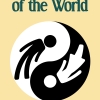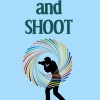
We drove along, hemmed in by the tall trees of the Black Forest, all the way to Cologne reaching by afternoon. I was keen to see the German city that I read about so much in many World War II stories…a city that the Allies army had bombed and battered flat.
Now the city wears the serene charm of wide avenues and graceful squares. We passed Haymarket, famous for Christmas decorations, that boasts an impressive statue of King Fredrick William III of Prussia.
Our first stop was Cologne Cathedral, a gorgeous gothic Roman Catholic Church. It was built to house the relics of the Three Kings (who had brought gifts to Baby Jesus). The building of the Cathedral began in the 1248 and it took… gasp! EIGHT centuries to build! I was fascinated by its stained glass windows depicting various biblical events. Its hallowed precincts are filled with art treasures. The Shrine of the Three Kings, in the shape of a basilican church, is made of bronze and silver, gilded and ornamented with figurative sculpture, enamels, and gemstones. The shrine was opened in 1864 and was found to contain bones and garments. We saw a large crucifix carved in oak and with traces of paint and gilding. In the Sacrament Chapel is the Milan Madonna, dating from around 1290, a wooden sculpture depicting the Blessed Virgin Mary and the infant Jesus. Spread around the huge domed space are altars to other saints of Cologne. All of these are the works of renowned artists at various stages of the Cathedral’s history.
Apparently the Cathedral is built on the site of a Roman temple. A Roman stone arch still stands near it. During World War II, the Cathedral suffered fourteen hits by aerial bombs. Badly damaged, it nevertheless remained standing in an otherwise completely flattened city. The twin spires were an easily recognizable navigational landmark for Allied aircraft bombing. In 1996, Cologne Cathedral was added to the UNESCO World Heritage List and remains Germany’s most-visited landmark.
We partook of biriyani, mutter paneer, seviyan dinner at Restaurant Indian Palace at Heidelberg, where one of Europe’s oldest universities is located. The restaurant is run by a young lady and her family. The lady is an Indian Bengali who has never been to India. When we came out of the restaurant it was 9 pm. The bright sunshine coupled with church bells chiming last vespers was such a delightful paradox.
It was 11 pm when we reached our hotel in the country, too tired to do much but stuff our luggage into the tiny service lift and somehow reach our room to crash.
Azure skies and a nip in the air greeted us when we woke. Breakfast of fruits, freshly baked bread and sausages was a treat. Outside we discovered that the hotel stood in a vineyard with distant hills as a backdrop. Rows upon rows of vines climbed the trellis, each row marked by rose bushes heavy with blossoms of many hues. As distant steeple bells tolled, our phones and cameras were busy recording the marvelous scenery for posterity.
A few hours later we were on another trip that assailed our senses. We were speechless with wonder as the world-acclaimed Rhineland opened up to us on a three-hour cruise down the Rhine. Picturesque castles on hilltops where, any moment, we would perhaps see Rapunzel letting loose her golden tresses vied with ancient churches and villas with peaked turrets. Breathtaking vine-terraced hills flanked the river providing livelihood for many of the villages hugging the shores. I recalled Victor Hugo’s description of the river, ‘The Rhine combines everything. The Rhine is a swift as the Rhône, wide as the Loire, winding as the Seine…royal as the Danube and covered with fables and phantoms like a river in Asia.’
Our hearts were full with contentment that we had sighted the best of Germany as we embarked on our journey to Austria. We drove along the autobahn built by Hitler to serve as runways for his fighter planes in WW II. It ran parallel to a railway that was punctuated by stations build in stone and permeated by old world charm. An ancient Roman fortified wall, at times in ruins made the third parallel to the tarmac and the rails. Each element seemed to speak of its own historical era. It was like seeing history etched right there.
Lunch was at Wattens followed by a tour of the Swarovski Kristallwelten or the Swarovski Crystal Worlds. Twenty minutes from Innsbruck, amidst the mystical mountains of Tirol, we came upon this fairy tale world of shimmering crystal.
Daniel Swarovski who founded the crystal-cutting company Swarovski in the small Tyrolean town of Wattens in 1895, had an unusual vision. He was the first to regard crystal not merely as a material but an inspiration. Today Swarovski Crystal Worlds is one of Austria’s most popular attractions, part museum, part theme park, and part art installation.
Swarovski Crystal Worlds opened in 1995 as a grand, multi sensory experience of crystal in all its facets. During our visit, slide shows educated us on how crystal is obtained and how its facets or faces are cut, a bit like any other precious stone. We crowded around a crystal that had a hundred facets while crystal art and designs by art world luminaries in the Chamber of Wonders were wondrous. I loved the crystal path that lighted up each time I took step forward on it.
In the garden, landscape artists, Andy Cao and Xavier Perrot had created the Crystal Cloud, a monumental installation comprising some 800,000 hand-mounted Swarovski crystals that drift above a black Mirror Pool. Not only did we pause in admiration but a cunning paved slope into the pool allowed us to do trick photography. From certain angles, posing on the path made it seem we were floating in the pool!
No doubt, the Swarovski Kristallwelten fascinated us all. However, at the store that was part of the museum, I overhead words that made me proud. An Indian tourist was urging his teenage daughter to select a ring set with glittering crystals that he wanted to splurge on her. I cannot forget her retort. ‘Papa’, she said, ‘We are Indians. When I can wear diamonds we get in our own country, why should I spend so much on a shining piece of glass?’
While crystal is not glass, her point was well-made. Places like Surat yield gems far more fascinating, more alluring, and more valuable than the much-hyped Swarovski Crystal.
That is my opinion. You are welcome to yours.
First published on www.storyfuntastika.com. Copyright@Sutapa Basu 2016
About the Author







Comments